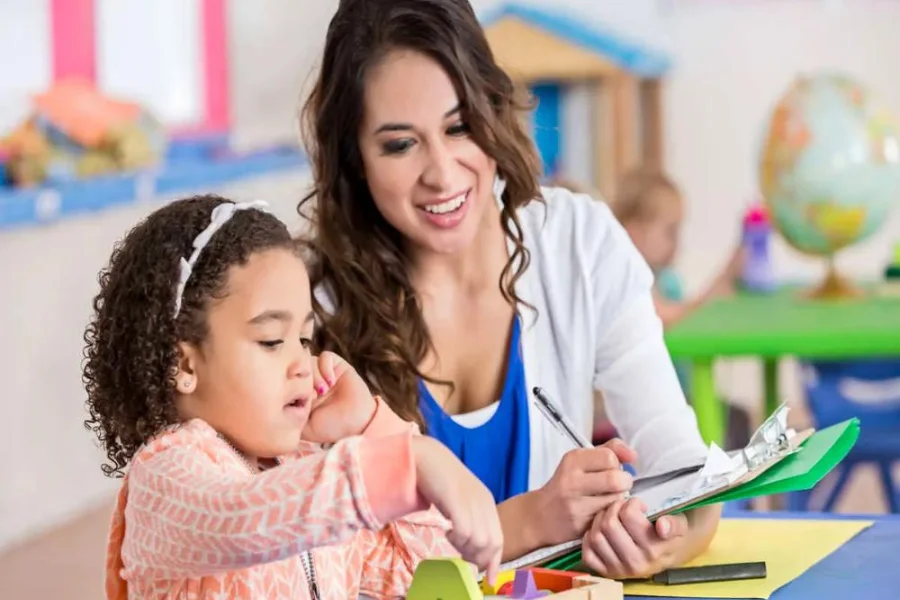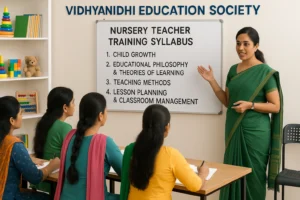
Source: learningpolicy
Inclusive Learning refers to educational methods that make sure each student, irrespective of their abilities or backgrounds, has equal rights to get educated. By creating an atmosphere where every student can participate fully, inclusive education promotes diversity, equity, and support for individual needs. It recognizes that each child is unique and nurtures a sense of belonging, making education more meaningful and impactful for everybody. This method is crucial as it plays a significant role in boosting academic growth along with overall social skills building and building a confident personality for long-term success’s.
What is Disability Inclusive Education Principles?
Disability Inclusive Education Principles concentrate on ensuring that children with disabilities get various learning opportunities like a normal child. These principles guide teachers, schools, and societies in building a learning atmosphere where students with disabilities are not only facilitated but actively included in all aspects of education. By following these principles, schools promote both educational and social growth for each student.
Key Disability Inclusive Education Principles:
Access for All
Schools must ensure that their physical and digital environments are accessible to students with disabilities. This includes ramps, accessible learning materials, and assistive technologies to meet diverse learning needs.
Individualized Support
Each child has a distinct learning style, meaning every child learns differently some can be visual learners whereas some learn by doing. The Disability Inclusive Education Principles make sure that lesson plans are devised in a manner that takes care of the learning styles of all children in general.
Positive Bond Building with Parents and Society at Large
The intervention process with special children can work magic if it has equal involvement of the parents and the society at large. Collaborating with parents and communities gives children a sense of confidence and the feeling of being valued by everyone boosting their confidence.
CPD and awareness
The foundation of Inclusive Education is based on skilled and well-trained teachers who are well-versed with the latest educational practices and the latest developments in the field of Special Education. Teachers have to put in the effort to learn and update themselves regularly.
Fostering Positive and Welcoming Classroom Environments
Designing a classroom that welcomes children with a positive atmosphere immediately makes a lasting impact on them. A positive learning environment helps children to value their differences and allows them to learn better.
Incorporating Disability Inclusive Education Principles helps create a supportive, enriching environment for students, contributing to their academic success and overall development.

Source: edweb
What is the Difference between Special Education and Inclusive Education?
Special Education and Inclusive Education are two interlinked terms but have a fine line of distinction and educators and parents need to know what is the exact difference between them to implement the right teaching methodologies and strategies to enhance the learning outcomes for children with special needs.
Special Education
Special Education is designed to provide personalized instruction to children with disabilities, often in separate settings such as special schools or specialized classrooms. The primary goal is to offer customized teaching strategies that address individual learning challenges.
Exclusive Features of Special Education
Exclusive Sections of Students: Exclusive classrooms are designed for children who have similar learning patterns and are placed together to cater to their varied needs.
Tailormade curriculum
The syllabus designed is curated keeping in mind the specialized requirements of each child which can differ from what is taught in a normal mainstream classroom.
Individualized Education Programs (IEPs)
The IEP is an exclusive tailor-made educational program that is devised keeping in mind the learning objectives and learning goals of the students including learning techniques that suit the child the most.
Skilled Adept Educators
Aspiring teachers are equipped with specialized pedagogies and teaching strategies that enable them to cater to their students in the best way possible handling students with various physical, emotional, and intellectual disabilities.
Inclusive Education
The main purpose of Inclusive Education is to accommodate all children with varied learning styles along with their disabilities in a single mainstream classroom. Providing each child a fair chance to receive quality education alongside their peers is what Inclusive Education aims for. Inclusive Education, on the other hand, integrates students with disabilities into regular classrooms alongside their peers.
Key Features of Inclusive Education:
Integration in General Classrooms
Students with disabilities are educated in the same surroundings as their non-disabled classmates.
Additional Educational Support
Students receive additional support in the form of exclusively designed learning materials and special assistants for catering to each child’s learning.
Combined Teaching
When there is a mix of Special Educators and Teachers coming together and combining their teaching practices it helps to accommodate the learning needs of all children ensuring the overall growth of all children.
Emphasis on Social Progress
Inclusive Education aims at the betterment of the child in all the developmental areas of which
Focus on Social Inclusion
Inclusive Education highlights not only educational growth but also social presence, encouraging children to build relationships with their classmates.
Difference between Special Education and Inclusive Education
The main difference between Special Education and Inclusive Education depends upon how children are taught. Special Education often follows in separate settings, while Inclusive Education brings all students together in the same surroundings.
Special Education concentrates on individual instruction in expert settings, whereas Inclusive Education aims to participate children in various activities in classrooms with the necessary support.
In Special Education, the curriculum is highly modified, while in Inclusive Education, adaptations are made to ensure all students can follow the general curriculum.
Promoting Inclusive Learning
Inclusive Learning focuses on providing all students, regardless of their abilities, with equal education opportunities. It promotes a sense of belonging and makes sure that each student’s needs are met in a mainstream environment. Vidhyanidhi Education Society (Govt. Regd.) offers courses designed to encourage Inclusive Learning and equip teachers with the necessary skills to foster an inclusive classroom.
While Special Education and Inclusive Education serve the same purpose of supporting students with unique needs, their approaches differ. Special Education focuses on separate instruction, while Inclusive Education promotes learning within a shared environment. Institutions like Vidhyanidhi Education Society are leading the way by offering programs that emphasize Inclusive Learning for a better future in education.
Join Vidhyanidhi Education Society’s SEN Course and create inclusive classrooms today!
For more details on LD Course Call/Whatsapp at +919321024137 / +919869866277
To download the brochure of the LD Course, Click Here!
FAQs
Why is Inclusive Learning?
Inclusive Learning supports equal access to education for each student, nurturing a sense of belonging and supporting diverse learning needs in a united classroom atmosphere.
What is Disability in Inclusive Education?
Inclusive Education Disability denotes providing equal learning opportunities to children with disabilities. Vidhyanidhi Education Society supports this through specialized teacher training.
What are the Benefits of Special Education Course?
A Special Education Course trains teachers with skills to support students with various learning needs, offering individualized strategies to foster their academic and social development.



